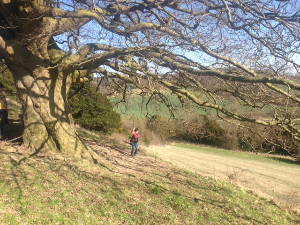New ‘software’ is needed for Armenian identity in the 21st century
Hratch Tchilingirian | 14 December 2014
"Armenians in 2115", a two-day, high-level seminar held in October 2014 for forward-looking strategic discussions, brought together some 40 individuals representing the Armenian community worldwide, including Europe, the Middle East, North and South Americas, Russia, and Armenia. A number of non-Armenian experts also took part as discussion facilitators. The participants discussed trends that are shaping the Armenian world. I was the facilitator of the group that dealt with the issue of "Armenian identity" and here are some of the key points of our discussion.
The debate on "Armenian identity" has a complex history, especially in the Diaspora. On one hand, there are a host of ideologies of identity and "politically correct" definitions, expectations and interpretations of "who is an Armenian"; on the other hand, new self-defined and actualised "Armenian identities" are prevalent among post-genocide third and fourth generation Armenians spread around the world. These include, for example, not only hyphenated Armenians (American-Armenian, Lebanese-Armenian, Russian-Armenian, etc.), but also what I would call "percentile-Armenians" (half, quarter, 1/8 Armenian, etc.) and, recently, the more openly discussed category of "Islamized Armenian" identity.
In the last one hundred years or so, there have been hierarchies of identity and canonical approach to definitions of "Armenian"—especially as articulated, rationalized and promoted by the political parties in the Diaspora and the elite in the homeland. However, the realities of the 21st century require a new thinking and understanding from the perspective of the specific places and context where Armenians live rather than on the basis of the rigid binaries of the dominant discourse of hayapahpanoum (‘preservation of Armenianness’).
The process of "being Armenian" involves at least four mains aspects: (a) affirmation of identity ("I am Armenian"), (b) connecting with others (family, friends, larger community), (c) developing concerns for Armenians and Armenia, (d) manifest engagement (getting involved).
Even as over the decades "Armenian identity" has had extensive and well-sourced "hardware" (schools, clubs, churches, etc), what is lacking is "software" for the 21st century. The development of the Armenian identity "software" would require well-thought through and organised sets of ingredients ("values", "ideas", "symbols", etc.) that would provide a "common denominator" (admittedly a problematic concept) of Armenian identity. The process of coming up with a workable "software" (some call it a "Creed" or "Commandments") is complex on multiple levels -- from geographical and socio-cultural considerations to ideological and political differences.
The discussion of the issue of "Armenian identity" needs serious and ongoing study, debate, dialogue that would lead to a formulation of an understanding of what is "Armenian" about "identity".
14 December 2014


